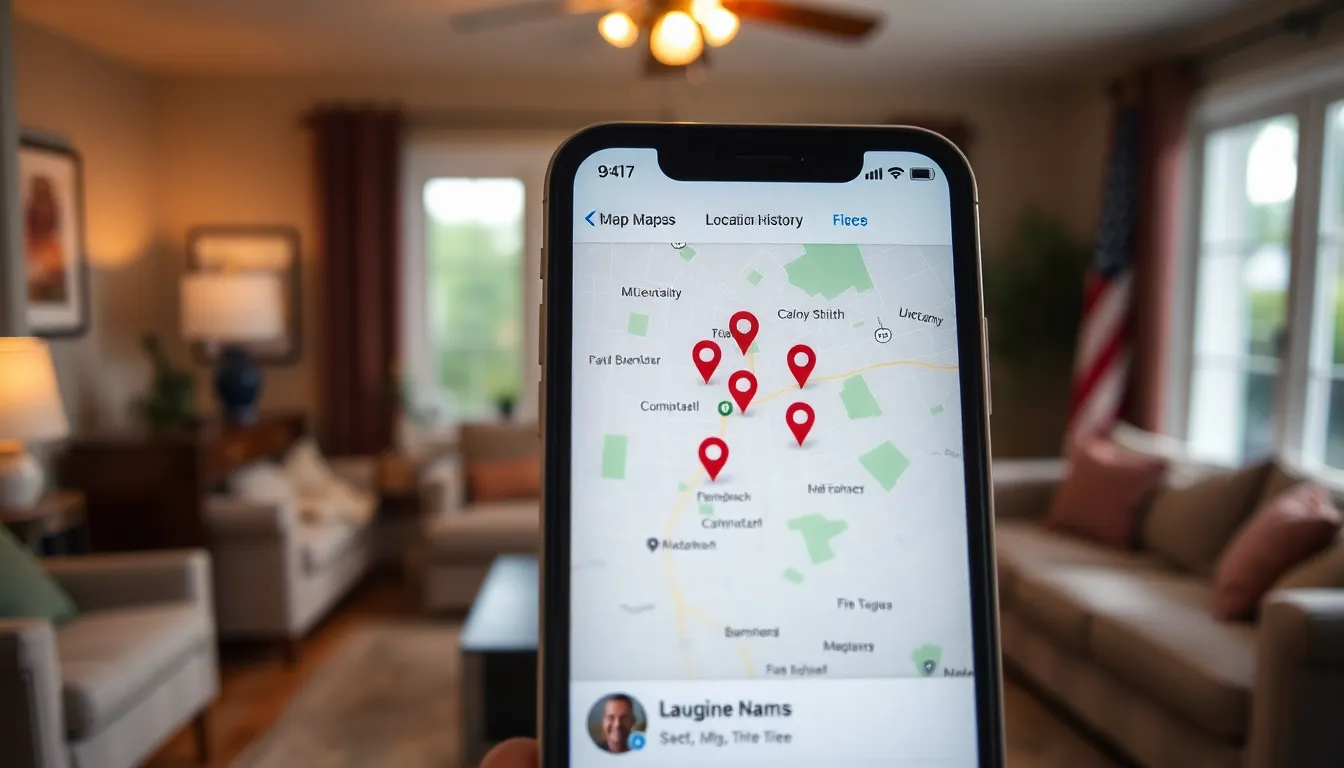Ever wondered where your iPhone’s been taking you? Maybe it’s time to unlock the mystery of your location history. Picture this: you’re at brunch, and your friend asks, “Hey, remember that taco truck we stumbled upon last month?” You’re left scratching your head, but your trusty iPhone knows all.
With just a few taps, you can dive into a treasure trove of your past adventures. Whether you’re trying to recall that hidden gem of a café or just want to impress your friends with your spontaneous road trips, knowing how to access your location history can turn you into a modern-day explorer. Let’s navigate this digital map together and uncover the secrets of your iPhone’s travel diary.
Table of Contents
ToggleUnderstanding Location History on iPhone
Location history on an iPhone records places visited over time. This feature helps users recall specific locations and past activities.
What Is Location History?
Location history is a tracking feature that logs geographical locations based on device GPS data. This feature activates when location services are enabled. Users access this information through settings, revealing a detailed timeline of places visited. It includes specific dates and times, which helps users reflect on their travel patterns. Privacy settings govern access, ensuring users retain control over their location data.
Importance of Location History
Understanding location history enhances navigation and memory. Users can track frequented areas, making it easier to find favorite spots again. This feature provides context for stories shared with friends. It simplifies trip planning by recalling locations previously visited. Moreover, safety features benefit from location history, allowing users to share their whereabouts in emergencies. Users can utilize location data to monitor movement trends, helping to develop awareness of travel habits.
Accessing Location History on iPhone

Accessing location history on an iPhone provides valuable insights into travel patterns. Users can easily retrieve this information through specific settings and applications.
Enabling Location Services
To access location history, enabling Location Services is essential. Navigate to Settings, tap Privacy, then select Location Services. Users must toggle the switch to turn it on. This action allows apps like Maps to record locations visited over time. Users can further customize permissions by selecting individual apps and choosing either “While Using” or “Always.” Changes take effect immediately, ensuring that location tracking begins as soon as possible.
Using the Maps App
The Maps app offers a user-friendly interface for viewing location history. Open the app and tap your profile picture in the upper right corner. Select “Show My Location” to view a map of recent locations. Users can also access “Places” to see frequently visited areas. To gain a detailed view, tapping “Recent” shows specific addresses and timestamps of locations visited. This feature helps users remember past journeys, making explorations more enjoyable and organized.
Reviewing Location History
Accessing location history on an iPhone provides valuable insights into past travels and visits. Users can explore their history to enhance their journey planning and reminisce about past adventures.
Viewing Significant Locations
Significant Locations feature highlights places frequently visited over time. It records this data to assist users in recalling important spots. Users can find this by navigating to Settings, selecting Privacy, and tapping Location Services. From there, they choose System Services and then Significant Locations. Tapping on any location reveals dates and times visited, providing a complete picture of travel habits. This tool also allows users to revisit cherished experiences or plan future outings based on previously enjoyed locations.
Managing Location Data
Managing location data involves customizing how and when location history gets tracked. Within Location Services, users can easily toggle settings for individual apps, which helps control data access. Navigating back to Significant Locations allows users to delete specific entries or clear all their history. Additionally, users can disable Significant Locations entirely if privacy takes precedence. Regularly reviewing these settings helps maintain control over personal information while keeping useful features active. Through careful management, users strike a balance between convenience and privacy.
Troubleshooting Location History Issues
Location history issues can sometimes arise while accessing the feature on an iPhone. Identifying common problems can help users quickly find solutions.
Common Problems and Solutions
Errors may occur when Location Services aren’t enabled. To fix this, users should navigate to Settings, select Privacy, and ensure Location Services is turned on. Sometimes, the Maps app may not show the detailed history expected. Restarting the app often resolves this. Users may also experience outdated location data, which requires them to check if the “Share My Location” feature is active. Resetting the location settings can refresh any inconsistencies that arise.
Privacy Concerns and Settings
Privacy settings play a crucial role in managing location data. Users frequently worry about who can access their location history. For added security, adjusting permissions for individual apps is essential. Go to Settings, tap Privacy, then Location Services to customize these options. Additionally, regularly reviewing Significant Locations can help users maintain control over their data. Clearing location history periodically ensures sensitive information is not retained longer than necessary.
Accessing location history on an iPhone opens up a world of memories and insights. By enabling Location Services and navigating through privacy settings users can easily track their past journeys and frequently visited spots. This feature not only enhances navigation but also enriches storytelling and trip planning.
Regularly reviewing location history allows users to stay aware of their travel habits while maintaining control over their personal data. With the ability to customize settings and manage privacy effectively users can enjoy the benefits of location tracking without compromising their security. Embracing these tools can transform how users explore and remember their adventures.




